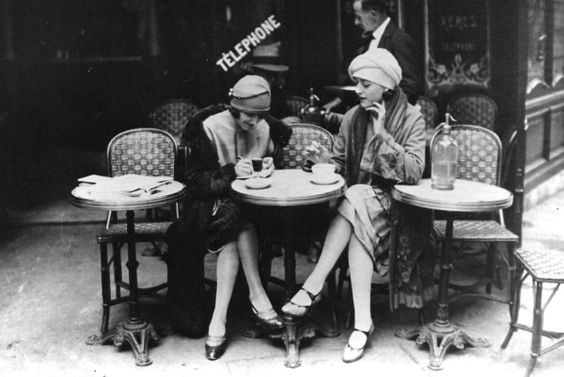Modernism and Paris After the War

The moral devastation experienced by the US after the Great War led the country to the quest of achieving a new stability. This was sought through regaining economic strength and retaining traditional values. It was during this aftermath that many American modernist writers, in search of a safe haven, emigrated to Europe. Many settled in Paris, finding the freedom that could release them from the disillusionment caused by the war.
For many years Paris was home to American modernist writers, poets, and artists during an era of postwar recovery and prefascist political power. These writers were then known as “the Lost Generation”—those who due to the war had lost their faith in the government, God, and the American dream.
Even with the economic and social independence that American women gained in the roaring '20s, the literary and art scene still offered less freedom to women. This led many American female writers and artists to join the emigration to France in the 1920s and '30s. Among these women were Gertrude Stein, Djuna Barnes, Solita Solano, and Thelma Wood, just to name a few. However, “the Lost Generation”, a term first coined by Stein, remained associated mainly with male writers, such as Ernest Hemingway and F. Scott Fitzgerald—the major heroes of this generation.
In the 1920s and 30s, Paris had inspired women modernist writers and artists as the city gave them freedom to live an alternative lifestyle to that of the conservative postwar American society. These Parisian women, who led the unmarried, bohemian, and bisexual lifestyle, were later dubbed the “Left Bank women writers”, as they famously resided in this part of Paris. Their work and lifestyle quickly became a subculture within the male dominated literary and art community of American modernists.
The Left Bank women writers were less acknowledged in modernist literature than their male peers. They were eventually recognized but labeled as “women writers” or “lesbian writers”. Some writers find this separate category of recognition as derogatory. Barnes, who is well-known for her classic novel, Nightwood (1936) which was influenced by her relationship with Wood, once said, “I hate women writers!” and wanted to disassociate her work from this label. The category had emerged owing to the absence of white heterosexual male bias (albeit still predominantly white) in the works of Left Bank women writers. Despite this, arguably, the category may have kept the work of Left Bank women writers at the margins of the modernist literary movement.
The male comrades of the Lost Generation emerged from a state of cultural changes and turbulent times. Even though breaking with traditional literary conventions, they were often criticized for preserving a predominantly masculine culture; thus, contributing to modernism’s marginalization of women.
Photo: Solita Solano and Djuna Barnes in a Paris cafe around 1922 (Maurice Brange)
-Some Thoughts from the Cappuccino Girl- (2021)
#literature #Worldwar1 #womenwriters #lostgeneration #history #US #Paris #gender #women #subculture #counterculture
If you are interested in this topic, you might like to read: Unsung Women Writers of the Postwar Era https://feministpassion.blogspot.com/2019/03/unsung-women-writers-of-postwar-era.html
POPULAR TOPICS
#subculture
Gurlesque: Poetics of the Bizarre, Ugly, and Feminine
#films
Mrs. Robinson, Countercultures, and Politics
#history
The Dutch Golden Age, Golden for Whom?
I also write articles here: https://feministpassion.blogspot.com/